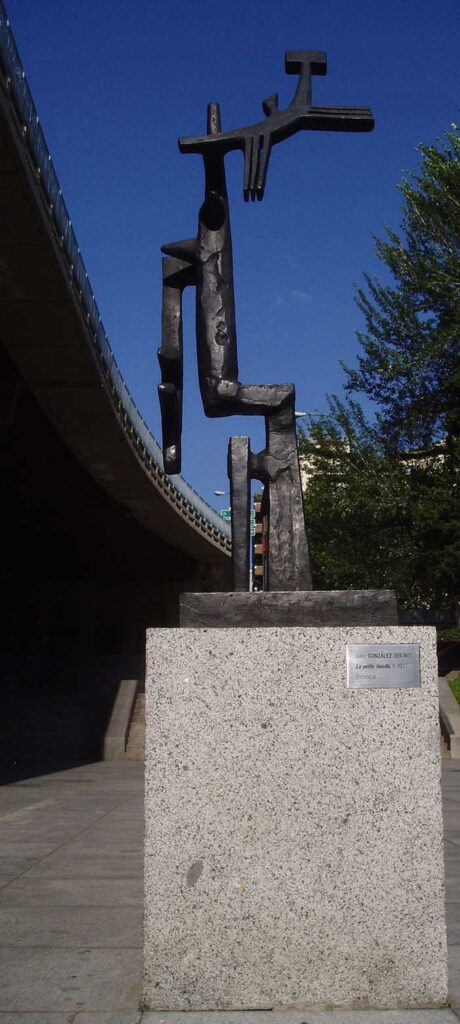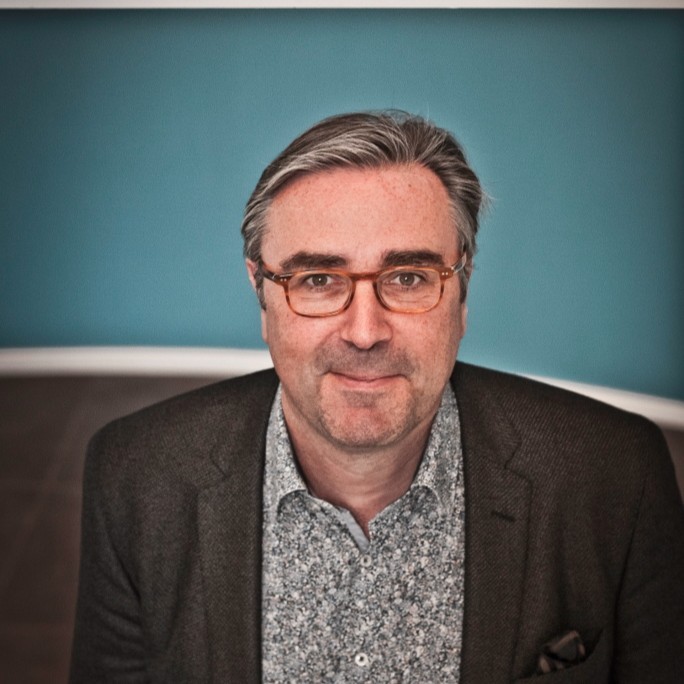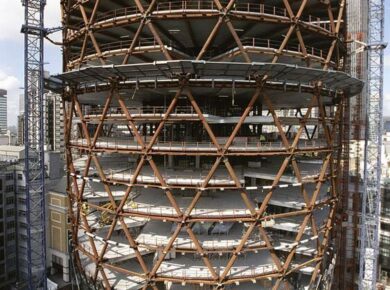Julio Gonzalez, Picasso & the dematerialization of sculpture.
Julio González i Pellicer (21 September 1876 – 27 March 1942), born in Barcelona, was a Spanish sculptor who developed the expressive use of iron as a medium for modern, abstract sculpture. He came from a line of metalsmith workers. González’s father, owned a workshop and González learned from him the techniques of gold, silver, and iron metalwork.

Photo: Edescas / Wikimedia
By the turn of the 20th century, Pablo Picasso and Julio González became great friends. González moved to Paris in 1902 where he associated with the Spanish circle of artists of Montmartre, including Pablo Gargallo, Juan Gris and Max Jacob. In 1918, he developed an interest in the artistic possibilities of welding, after learning the technique whilst working in the Renault factory at Boulogne-Billancourt.
In 1920 he renewed his acquaintance with Picasso. He also forged the infrastructures of Constantin Brâncuși’s plasters. In the winter of 1927–28, he showed Picasso how to use oxy-fuel welding and cutting. Influenced by Picasso, the fifty-year-old González deeply changed his style, exchanging bronze for iron, and volumes for lines. González began to formalize a new visual language in sculpture that would change the course of his career.

Photo: artbasel.com
González created ironwork at this time that would establish him as “the father of iron sculptures” During the early 1930s, few artists utilized forged or welded metal as a potential medium for their art. This is because, at the time, many artists did not directly work with the medium. Rather, artists worked with a foundry and expert technicians to execute the works of art. González was unique in this instance because his work demanded an active interaction- something that required the skills shaped by a long and specialized apprenticeship.
About the Author:

Bruno Dursin – Managing Director at Believe in Steel. Bruno has more than 30 years of experience in promoting steel & steel solutions. His clients benefit from his extensive network within the building industry.



